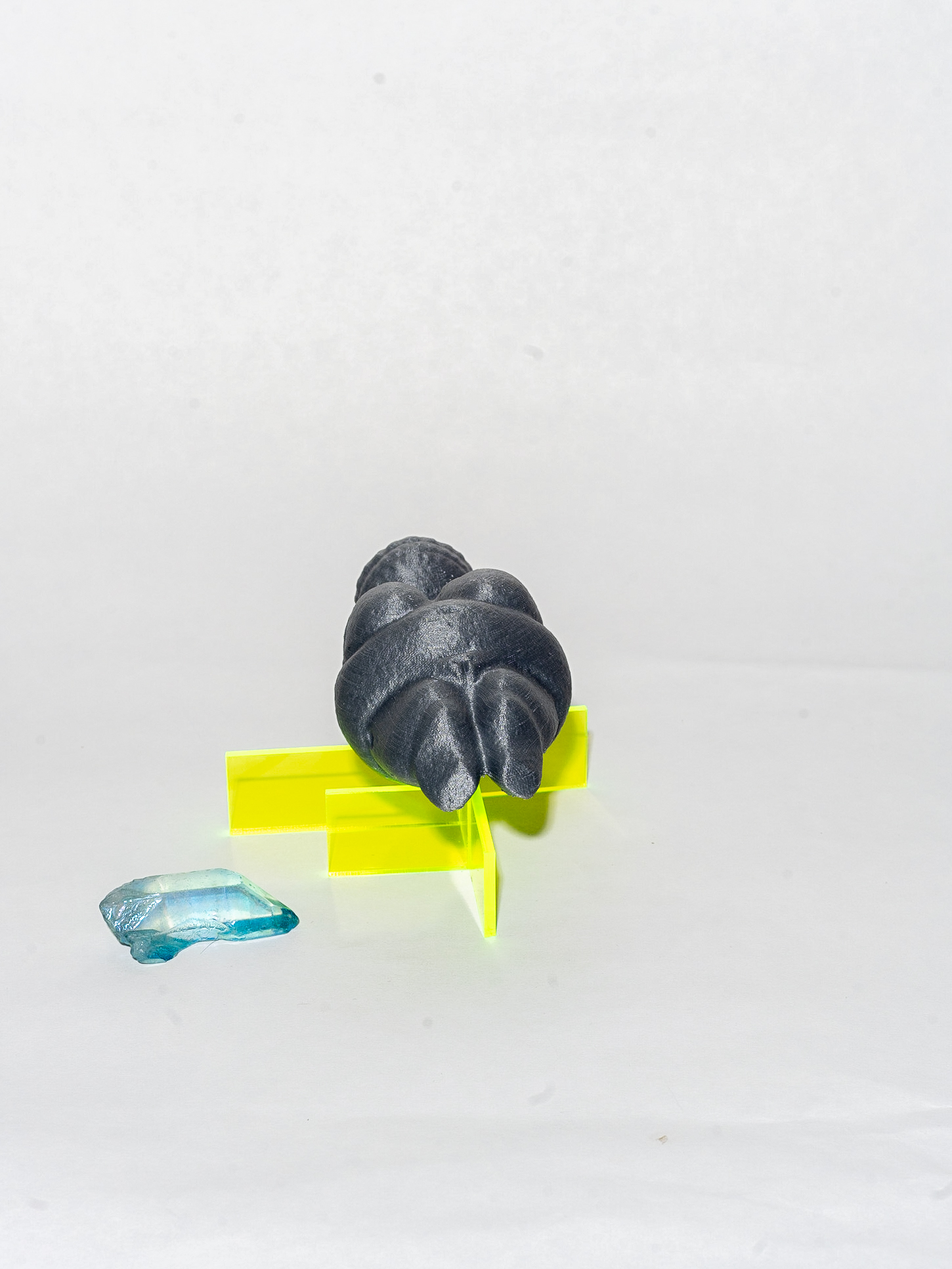Venus de Milo and Stone 1
Rob Andrade
Venus de Milo and Stone 1, 2017
Cabinet of Curiosities, Ruane Center for the Humanities, Second Floor
About the Work
The original Venus of Willendorf figurine, now located int eh National History Museum of Vienna, is estimated to have been made 25,000-30,000 years ago, although very little is known about its origin, method of creation, or cultural significance. It was found by a workman named Johann Veran in 1908 during excavations at a Paleolithic site near Willendorf, a village in Lower Austria. Many similar sculptures discovered in the 19th and early 20th centuries are traditionally referred to in archaeology as “Venus figurines”, due to the widely-held belief that depictions of nude women with exaggerated sexual features represented an early fertility deity. Yet this reference to the specific goddess Venus is metaphorical, as the figurines predate that myth by many thousands of years. This figure has no visible face, and her head is covered with circular horizontal bands of what may be rows of plaited hair, or perhaps a type of headdress.
Further Reading:
Smart History
Vienna Natural History Museum
